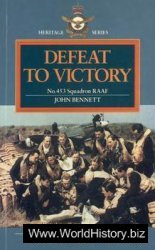Facilitating Connections to Values and Meanings
The practice of archaeology, and archaeologically derived information and objects, can inspire a wide variety of artistic expressions ranging from computergenerated reconstructions and traditional artists’ two - and three-dimensional conceptions to other art forms such as poetry, opera, storytelling, and more modernistic genres such as landscape art. Although somewhat conjectural, these works are often no more suppositious than technical interpretations and have the benefit of providing visual and conceptual imagery that can communicate contexts and settings in compelling and unique ways. These connections broaden the significance and relevance of archaeology for scholars as well as the general public. The cognitive connections between archaeology and art reflect an inductive approach in defining and explaining archaeologically derived information and making it meaningful to the public. An emphasis on using artistic expression in interpretations is consistent with a new direction in archaeological practice that challenges the positivist paradigm of processual archaeology and promotes the relevance and validity of inductive reasoning over deductive reasoning.
Ancient Muses: Archaeology and the Arts
In Ancient Muses: Archaeology and the Arts (2003), the authors explored a variety of outcomes stemming from the interplay of archaeological inquiry, observation, and certain artistic expressions, and how these can demonstrate and be applied to more meaningful and effective approaches to interpretation that emphasize public awareness, access, and inspiration. The international contributors to Ancient Muses articulated their philosophical underpinnings by explaining the importance of the development of interpretive narrative archaeology and interpretive historical fiction that employ the imaginative uses of arts such as storytelling and drama in making the past come alive for public audiences. For example, Ancient Muses describes how contemporary Native American groups such as Navaho and Hopi look to the rock art as inspiration from their ancestors and a renewed understanding of the timelessness of their culture. Similarly, Aboriginal people in Australia are described as using visual arts to establish and maintain connections with the world around them; beyond mere indicators of cultural interaction, rock art images are used to convey social and cultural information and provide visual cues for oral histories. An article on archaeology and poetry describes ways in which both the poet and the archaeologist ‘see’ what is not so obvious; both poet and archaeologist continually reinterpret inanimate objects or ‘things’ that they try to explain or enable to ‘speak’ to us about their meanings. A piece involving the screenplay for the film ‘The English Patient’ portrays the translation of a ‘too perfect’ novel into film and the process of transformation of text and image over time. Another article describes interpretive writing experiences that attempt to meet the challenge of breathing life into the findings of technically oriented archaeological reports.
More fine arts-related discussions convey how a public sculptor was inspired by his exposure to archaeology and cultural history in creating public sculpture. A team composed of an archaeologist and a librettist tell an intriguing tale about how the their interaction and collaboration produced an original, historically based libretto, and eventually a full production opera.
Fifth World Archaeological Congress (WAC 5) Session
Another forum for discussion of this topic was the Fifth World Archaeological Congress (WAC 5) in 2003. In this international forum, held in Washington, DC, there were demonstrations of examples and practices from both artists and archaeologist/artists, and their interplay, that promote the relevance and validity of the deductive reasoning approach and a shift in how many archaeologists plan and conduct research and evaluate significance. For example, Lance Foster, a member of the Iowa Tribe of Kansas and Nebraska, professes to be both an American Indian artist and an archaeologist:
‘‘I have always been Indian, and I have always been an artist... In examining the relationships between Indian art and archaeology, I believe I have found a unique personification... I wanted to talk about art, from the gut, from my experience as both an Indian artist of the Iowa tribe, and as an archaeologist.’’
David Middlebrook, a renowned sculptor from California, in an example of public art, explains:
‘‘What peeked my interest were the thirty-thousand-year-old cave paintings of southern France which I believe were the first signs of the intellectual revolution. I have incorporated these images into many of my large scale public art pieces. In recent years I have become at one with the technical and esthetic challenges of combining natural materials with intellectual and emotional content. The engineering tension and balance is part and parcel with the intent and substance of the work’’ (Figures 4 and 5 ).
Johannes Kranz of the foundation ‘Casa de los Tres Mundos’ in Nicaragua explained that the foundation is erecting a sculpture park composed of oversized copies of archaeologically recorded pre-Columbian artifacts. The oversized copies have been molded to ‘‘give back a piece of history and identity to the people of a newly constructed village’’. Here, an innovative educational and preservation initiative ‘‘serves as a model for joint efforts in community building, the strengthening of local identity and the challenge of preserving cultural heritage in similar projects throughout the world, particularly in underdeveloped countries’’.
Christine Finn, also co-editor and contributor to the Ancient Muses book, discussed ‘Figures in a
Landscape’: Jacquetta Hawkes’s 1953 film about the landscape sculpture of Barbara Hepworth. In the 1920s and 1930s, Barbara Hepworth was one of a small group of pioneering sculptors in London committed to exploring abstraction. By the early 1930s, she had developed her mature style: a sensuous kind of organic abstraction, sometimes incorporating strings, wires, colored paint, or holes piercing the sculpted form. Jacquetta Hawke’s film about Barbara Hepworth was one of many works that had the goal of reminding archaeologists swept up in a frenzy of postwar scientific and theoretical advances of the human values of their profession. Hawkes’ work now begs re-evaluation at a time when archaeologists are more aware of the need to communicate to the general public.
In ‘Stratigraphy: Digging Living Layers’, Nicola Laneri, another contributor to Ancient Muses, described a project consisting of a multimedia art installation that represents an ‘excavation’ of different ethnic ‘layers’ in a New York City neighborhood. This archaeological excavation of a contemporaneous context is provided using multimedia, including digging sounds, depictions of material culture, and images of a dialogue between the ‘conservation’ of the Italian tradition, represented by the words of Rosa Morrone, the owner of an Italian bakery in East Harlem since the 1950s, and the neighborhood’s ‘innovative’ facade, expressed by the words and work of the Puerto Rican painter-muralist-chalker James DeLavega. The images and objects that form this project embody the diverse ethnicities (Italian, Puerto Rican, Mexican) now present in the neighborhood and how diverse forms of cultural interactions (peaceful and violent) between these groups have led to the re-creation of ‘new’ material culture (e. g., espresso coffee made with an Italian Moka machine and Puerto Rican coffee, pizza prepared by Mexicans, Italian Madonna statues dressed with real hair - an Hispanic tradition - and worshipped by Asians) shared amongst all of these communities and remade throughout the cultural, functional, and ritual transformation of their values during the last century.
In his paper ‘Sherds ABOVE the Loess: historical archaeology as art,’ David Orr contended that archaeological objects recovered from American historic sites, like those extracted from antiquity, possess an intrinsic esthetic power far removed from their scientific or historic value. This paper addressed these origins and provided an approach to the utilization of historical archaeological objects and assemblages as ‘works of beauty’ and worthy of a fine arts approach. This realization, he said, should give all of us a new perspective on the complex matrix of functions which historical archaeological material possess. An example was given that focused on a select group of

Figure 4 An example of David Middlebrook’s public sculpture.
Early eighteenth century English slipware pottery found in one context in Philadelphia and how this assemblage could easily produce a very striking art historical/esthetic exhibit. Yet, properly staged, such an esthetically motivated exhibit of historical archaeological ‘treasures’ would not be antithetical to American anthropologically driven archaeologists.
In ‘From rock art to digital image: archaeology and art in aboriginal Australia,’ Claire Smith and Kirsten Brett explored the changing uses and meanings of Aboriginal arts from the Barunga-Wugularr region of the Northern Territory, Australia. The central theme here was the manner in which Aboriginal people use visual arts to establish and maintain connections with the world around them. Rock art images are used to convey social and cultural information and provide visual cues for oral histories.
When transferred into a digital format they can form the basis for educational tools that effectively extend indigenous forms of instruction.
Archaeological Interpretation and Environmental Art
Generally speaking, environmental art is art that demonstrates a relationship with nature. The setting for these works is often a mixture of natural or cultural elements of landscape. Much environmental art is ephemeral, is site-specific, and involves collaborations between artists and others such as scientists, educators, and community groups. It usually involves an interpretation of a natural form and is based on the premise that creating artworks informs humans about natural and environmental forces, issues, and processes. Environmental art ‘‘re-envisions our

Figure 5 Detail of Middlebrook public sculpture showing prehistoric pictograph images.
Relationship to nature, proposing through the (artist’s) work new ways for us to co-exist with our environment’’.
Seemingly taking their cues from the experimental archaeology model as well as from environmental art, some archaeologists have explored participatory methods of interpretation where the archaeologists attempt to experience and articulate new meanings and values for the resource. In these contexts, the landscape is seen not as something to be copied, but as a primary source for the creation of the work that is both artistic and interpretive. The place and the setting mold the work which is static and rooted in place. Its meaning and identity are not transferable to another location: the place is the work and the work is the place. In these archaeological interpretation experiments with environmental art, the appreciation of the work becomes anchored in the landscape. By being both ‘of’ the past and ‘of’ the present, these archaeologists claim that the work enriches understanding of both, in recognition of the multiplicity of meanings in a particular place and a particular landscape. Both the practices of interpreting the past and producing art, they contend, result in the production of new meaning of setting and resource, transforming our understanding of place and space. In this case, art and archaeology act together dialectically to produce a novel conceptualization of the past that can appeal to different audiences in different ways and produce a means of relating to the past that is much more than the sum of its component parts.
In an intriguing example from Leskernick Hill on Bodmin Moor in Cornwall, England, in the late 1990s, Bender et al. (2000) explore the conceptual links between producing landscape art works in the present and how this contributes to an understanding and interpretation of prehistoric lifeways. Initially, in
An attempt to represent our experience of the hill, they experimented with writing. They opened up their interpretive text by juxtaposing diary entries with conventional prose, but eventually decided that they also needed to create more open-ended drawings and images, ones which were more subjective, full of question marks, and in some way more indicative of their various interpretative leaps, perspectives, and knowledge. To Bender and the other project archaeologists, art was seen to provide alternate ways of telling the story and expressing the ‘powers’ of stones on Leskernick Hill. They tried to capture what they perceived as a powerful sense of place that the rocks evoked through their inherent sculptural properties and positioning on the site and cultural landscape. They did not aspire to recreate the specific meanings that the stones had to the Bronze Age inhabitants of the site, but rather to propose a creative response to the physical setting and attributes of the cultural landscape.
One of the many ways in which they explored this included physically transforming, and adding to, the surface structures of the hill by wrapping the stones and ‘creating installations’:
‘‘One key response we had to the stones was to wrap them. In doing this we were acknowledging and making tangible our actions within, reactions to, and interpretations of, Leskernick’s stoney landscape, and the possible significance of these stones to its prehistoric inhabitants. The process of stone wrapping served to energise the stones with our ideas and thoughts... We wrapped stones of particular shapes: triangular, ‘whale-backed’, and pyramidal stones. These stones seemed to be of particular significance to the prehistoric inhabitants of the hill, being centrally positioned within the back walls of the houses, or sometimes having enclosure walls ‘illogically’ incorporating them and in the wider landscape of the settlement sometimes having cleared areas around them... Wrapping with fabric curiously confounded the observer’s perception of depth and volume ... Wrapping the stones with cling film altered and obscured surface texture but still preserved the shape. We regard shape as being a key element in the choice and arrangement of stones on the hill... Wrapping stones within cling film and highlighting them with paint we found was a particularly effective way of visually expressing the significance of these stones.’’
One of their goals was to find ways to make the archaeological recordings of the past, and otherwise their engagement with it, more three-dimensional. They consciously attempted to avoid nostalgia for a vanished past or an irrational mystical relationship to culture or nature. Their work did not aim at replication but in situ transformation, attempting to rework a sense of place into present-day consciousness. They also attempted to find a middle ground between the personal idiosyncratic approach to landscape characteristic of contemporary environmental artists and the disengaged and disinterested ‘objectivity’ of visual representation in contemporary archaeology:
‘‘We are working on a hill in which a symbolic geography of place has been pre-constructed for us by its Bronze Age inhabitants. We are attempting to create a dialectic which mediates between it and ourselves, past and present. We engage with the stones through our bodies. We perceive Leskernick hill from within, not from looking at it as if in a painting. The meanings are a product of our encounter and participation and personal involvement creates perceptual intensity. The body is a constant in relation to a continuum of shapes and sizes and forms on the hill. An awareness and interpretation of the significance of different stones on the hill is ultimately a relationship between the body and the object. Our wrapped stones mark a place, they also mark a situation, an orientation, a relationship... For us, performing art is a process of engagement and enablement. It allows us to see the hill, its stones and the prehistoric architecture, in a new way. Through the visual transformation of the stones they become solid metaphors linking our experience of place to the past. Wrapping stones is, in essence, to follow the lead already provided by them, it is to be objectively guided in which we attempt to emphasize the form and character of the stones and the particular properties they possess.. .Our art both aids us in interpreting the past in the present and can be appreciated, on another plane, as a contemporary cultural work. By both being of the past and of the present we would claim that it enriches our understanding of both in a recognition of the multiplicity of meanings in a particular place and a particular landscape.’’ (Bender et al. 2000)




 World History
World History









